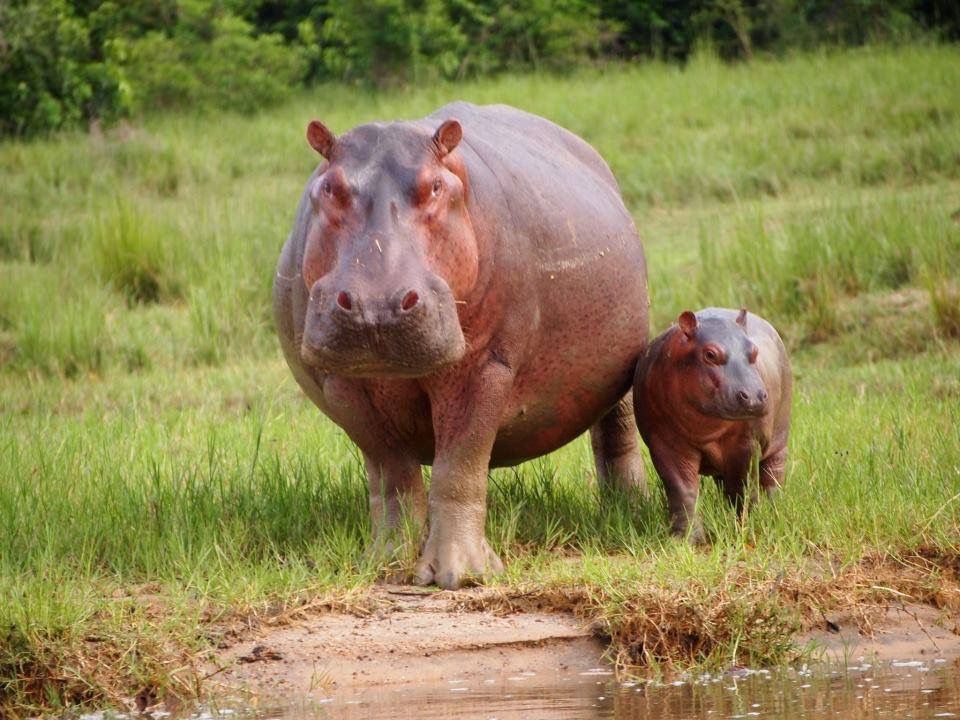
Hippopotamus is also commonly known as Water-Horse. Hippos are the third-largest land mammal after the elephant and the rhinoceros. Weighing in at 1,500–1,800 kg (3,300–4,000 lb.), an adult male stands up to 1.5m (4.5 feet) at the shoulder, and, oddly enough, their closest living relatives are whales and dolphins. Hippos spend most of their days submerged in water to keep cool, as they have no sweat glands.
Though they have webbed feet, their huge bulk prevents them from floating and they cannot swim. Their size does not, however, prevent them from outrunning a human - hippos have been estimated to reach terrifying speeds of up to 30 or even 40km per hour on land.
An adult hippo can spend as long as six minutes underwater, and their raised eyes, ears and nostrils allow them to remain almost entirely submerged for long periods of time. After spending the day bathing, hippos venture out at dusk and spend the night grazing, travelling up to 8km (5 miles) and consuming up to 68kg (150lbs) of grass each night to maintain their enormous size.
When hippos sleep in the water during the day they generally prefer to sleep in areas of shallower water. They are not standing or floating when you see them sleeping but rather laying flat on their bellies. Despite being semiaquatic and having webbed feet, an adult hippo is not a particularly good swimmer nor can it float. It is rarely found in deep water; when it is, the animal moves by porpoise-like leaps from the bottom.
#AfricantripswithGodie
#visitUgandarwandatanzania #Mammalsofeastafrica
Comments
0